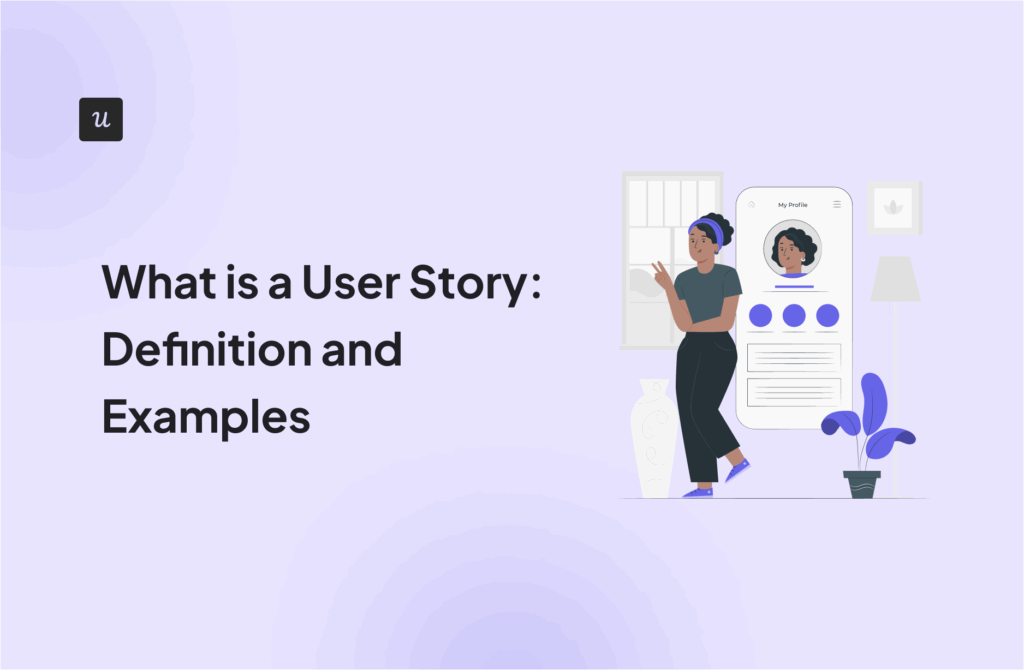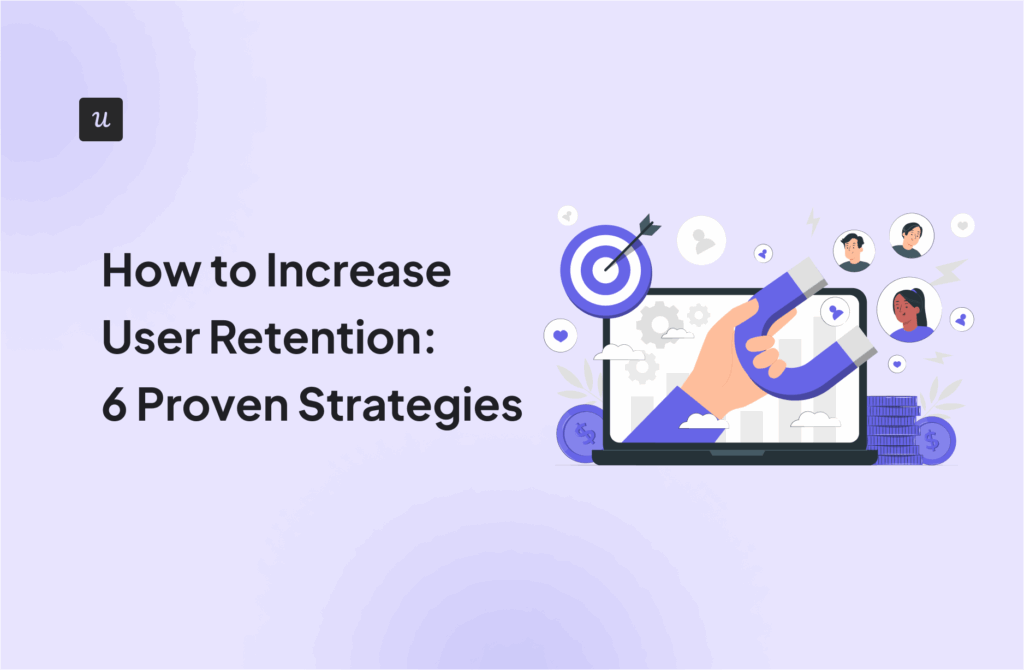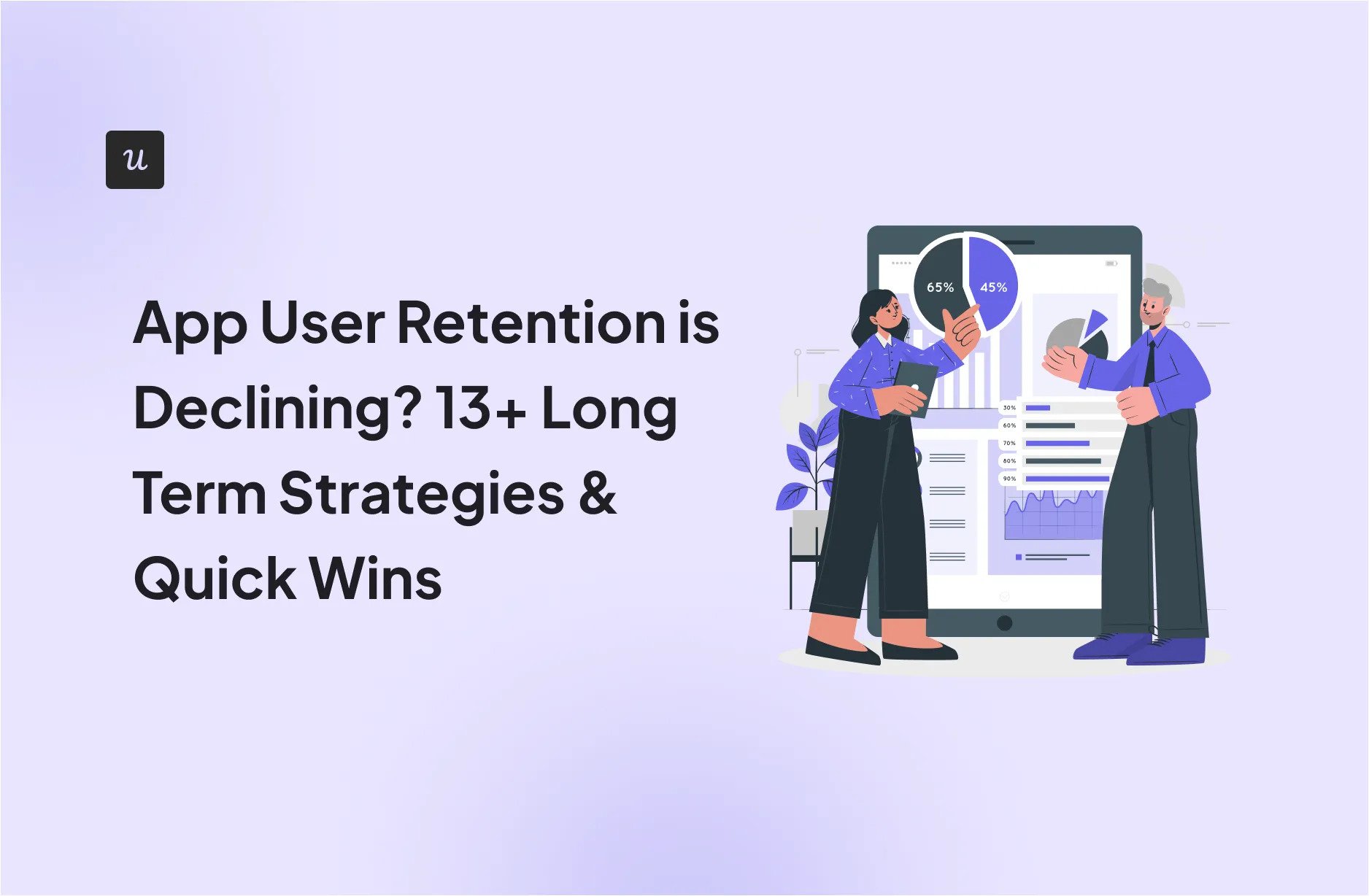
You launched a new app, and you’re excited to see how it’s performing. Things seem great initially, but soon enough, you see your analytics dashboard showing a constant decline. Many product teams know this feeling: mobile user retention is dropping, even after big updates and splashy feature releases.
I’ve seen various online forum discussions where people often share short-term fixes like heavy marketing or minor feature tweaks, hoping to retain more users. Sure, these moves can help a little, but they often miss the deeper reasons people drift away.
By mixing a few quick wins with a strategic plan, you can boost your odds of keeping them around long-term.
Try Userpilot Now
See Why 1,000+ Teams Choose Userpilot
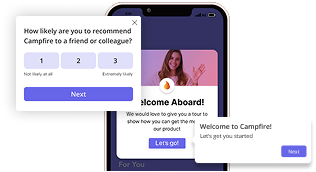
Why is your mobile app user retention declining?
Before we analyze why your app’s user retention rate is declining, let’s start with understanding what user retention is and why it is important for your business.
User retention measures how many users continue to use your product or service after their initial interaction or sign-up. A high retention rate means you earn more from each user while cutting acquisition costs. If retention slips, you end up overspending on acquiring new users instead of growing revenue from those you already have.
How do you calculate user retention?
Here is a quick formula to calculate the app user retention rate:
Retention Rate = (Number of users who return / Total number of users) x 100
Typically, user retention is measured over one day, seven days, or thirty days. This helps you determine whether users consistently return after their initial interaction.
What is a good retention rate for apps?
A “good” user retention rate depends on your app’s type and industry. A 30% retention rate after 30 days is considered solid for most mobile apps. However, if you’re below 20%, it’s time to reassess your approach.
Here are a few problems that could hinder your app user retention:
- No product-market fit: If your app doesn’t solve a pressing problem for users, they won’t stick around.
- The app isn’t engaging: A lack of engaging features can get users to ditch your app for a competitor. For instance, Instagram has simple yet highly engaging features, such as endless scrolling, user-generated content, and consistent visual appeal, which is why it succeeded compared to apps like MySpace or Friendster.
- Frequent app crashes: Technical glitches or slow load times disrupt the user journey. If users experience performance issues, they’re less likely to return.
- Complex onboarding: 74% of users abandon an app after a poor onboarding experience. If they don’t understand how to use your app right away, they’ll drop it before even giving it a chance.
- Poor UX: If your app is difficult to navigate or lacks a clear layout, users won’t hesitate to abandon it. The UX should feel intuitive and seamlessly guide users through the app.
- Too many ads: While ads are a great revenue stream, overloading your app with them creates a negative experience. The balance between monetization and user experience is tricky. Get it wrong, and you risk high churn.
- Excess push notifications: Push notifications can drive engagement only if used thoughtfully. Too many can overwhelm users, leading them to uninstall the app altogether.
- Forcing users to create an account immediately: Requiring an account too early can frustrate users, especially if they’ve just opened the app. Let users try before they buy to build their trust.
Let’s look at how to fix these issues:
Offer value from the start
Nobody wants to create yet another account before they even know if your app is useful or give permissions to an app without first experiencing its value.
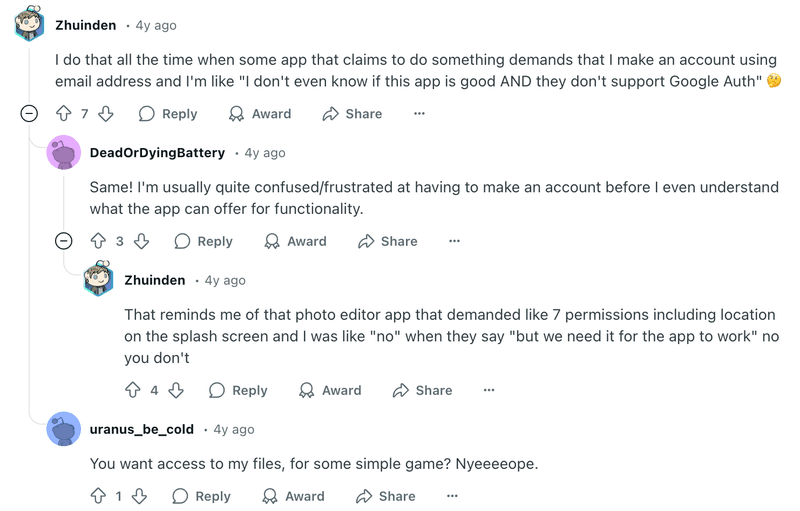
So, how do you offer value the moment a new user opens your app?
- Easy sign-up options: Offer a frictionless sign-up process, allowing users to get started without unnecessary barriers.
- Minimal required input: Ask for the bare minimum to get users into the app quickly and let them explore.
- Feature showcase: Give users a sneak peek at your app’s key features, highlighting its value early on.
- Pre-filled or suggested actions based on users’ jobs-to-be-done (JTBD): Personalize their experience from the start, guiding them toward meaningful actions.
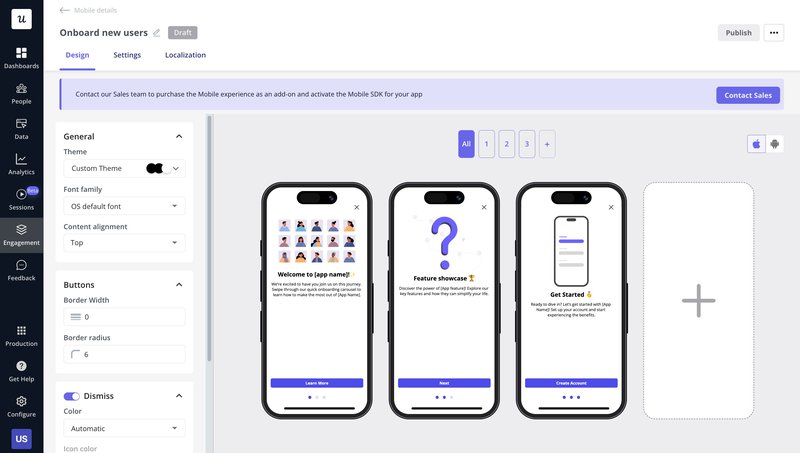
Create a personalized onboarding process
Don’t assume users know what to do in your app. You must personalize your onboarding journeys based on users’ JTBDs, goals, and pain points. Upon signing up, you can have your users answer specific questions as part of their onboarding process (e.g., What is your role? What do you aim to achieve today?). After this, you can:
- Segment users by product use case: Based on their responses, tailor their experience to match their specific needs.
- Trigger pre-built onboarding templates: Automatically deliver personalized onboarding flows relevant to each user’s goals.
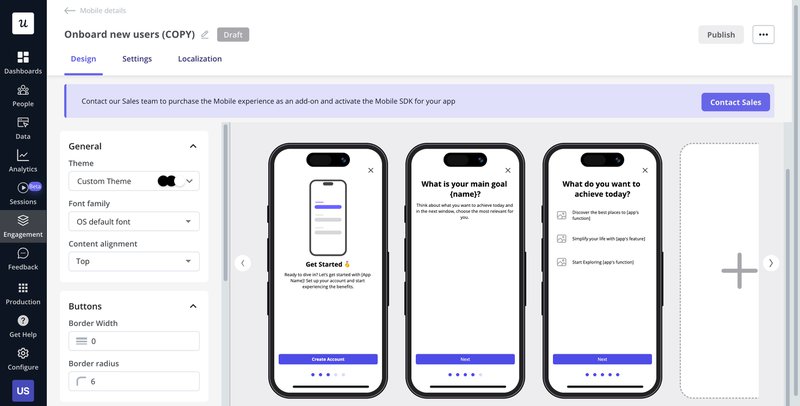
Drive user engagement with continuous improvements
According to Toptal, 88% of users are less likely to return after a bad user experience. That’s why it’s important to drive engagement from the first interaction. If you fail, your users will surely ditch you for a competitor with better features or pricing.
Here are some ways you can engage your users and keep them coming back for more:
- Integrate gamification elements: Add fun, rewarding features that encourage users to engage.
- Personalize user experiences: Tailor recommendations and interactions to users’ preferences.
- Use proactive customer support: Reach out to users before they encounter issues to keep them satisfied.
- Regular updates: Keep your app fresh with new content and functionality, making it something users want to come back to.
Let’s look at Spotify, an app that excels at retaining users by launching exciting new features. Spotify’s blend feature allows users to invite peers and build custom playlists. It is a great example of personalizing the user experience while increasing new user acquisition.
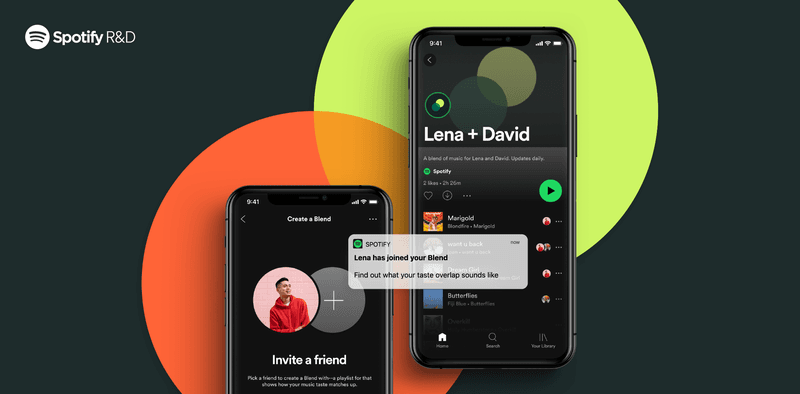
Create habit-forming and non-intrusive experiences with gamification
Gamification is one of the best strategies to drive mobile user retention and engagement, but it needs to be relevant, not just something you add randomly to your app.
You must create systems that tempt users to return, like streaks, badges, and progress tracking. Ensure the gamification elements align with your users’ goals and don’t feel like a forced gimmick.
For instance, learning apps like Duolingo use gamification to make the experience fun, motivating users to return daily to improve their skills.
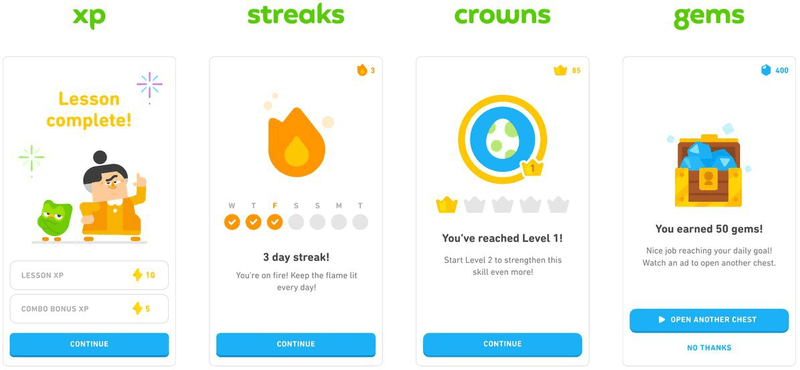
Use push notifications to bring users back in-app
Push notifications are an excellent way to remind users to use your app regularly. However, ensure that your notifications provide relevant updates so that your users aren’t compelled to disable notifications in their settings.
57% of users want to receive push notifications from social media platforms, followed by news apps (45.94%), e-commerce apps (25.29%), mobile games (19.05%), travel apps (10.08%) and blogging apps (9.24%).
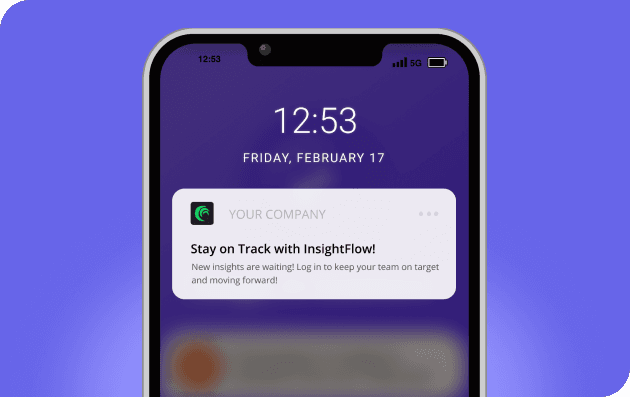
“Push notifications and in-app messages are a great way to bring users back to your app. But remember, they need to offer value or users will ignore them and eventually abandon the app.” – Jose Gomez, CTO & Co-Founder at Evinex.
Use in-app messaging to communicate with users
In-app messaging can be a powerful engagement tool when done right. Timely, contextual, and relevant messages can enhance the user experience and increase daily active users.
However, I suggest you don’t bombard users with the same information through both push notifications and in-app messages. Instead, you can tailor in-app messages to individual users based on their preferences and behavior for maximum impact.
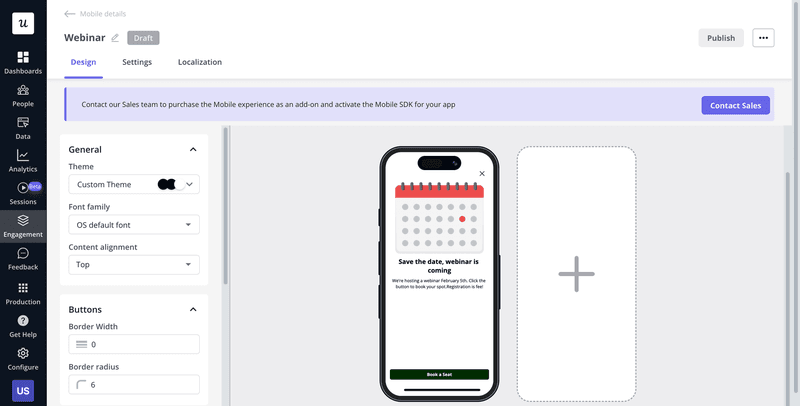
Personalize each experience at scale
To keep users engaged, tweak their experience based on their actions, job titles, subscription plans, or other relevant attributes. Delivering personalized content and interactions at scale ensures that users feel like the app is made just for them.
For instance, you can show new users onboarding tutorials and tips tailored to their specific use cases, while advanced users can access more in-depth resources and product features relevant to their needs.
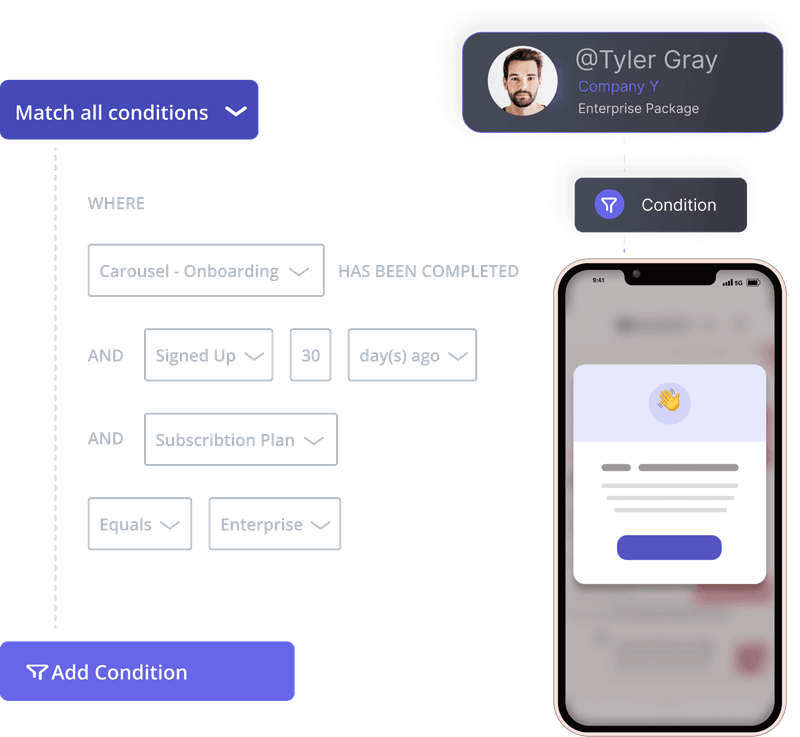
Allow users to choose the timing of their actions
You should never force your users to complete an action. For instance, if you constantly bombard your users with a pop-up to update the app, they’ll exit and uninstall in no time.
Give users the control to decide when and how they engage with your app. If there’s an update, let them choose whether to update now or later. A simple “X” on a modal can empower users and improve their overall experience.
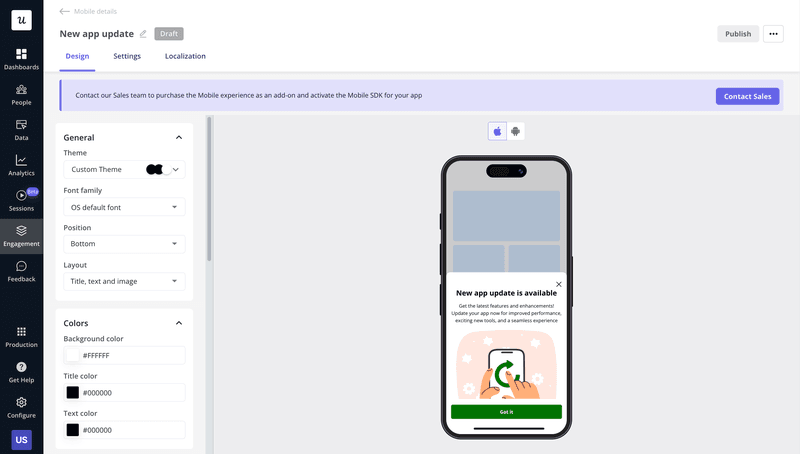
Ensure your mobile app UX is top-notch
A seamless, intuitive UX is critical to keeping users happy. Consider following Hick’s law and using progressive disclosure to present information gradually, making the app more user-friendly.
“To improve app retention rates, get your user design and experience right. The biggest reason why users uninstall an app after downloading it is because they did not enjoy the user experience. When the UI does not enhance the user experience, the site has a high bounce rate.” – Reuben Yonatan, Founder and CEO of GetVoIP.
Localize your content
Content localization can help engage users so they stick around for longer by making your app relevant to users in different regions. Offering content in the user’s preferred language makes the experience more engaging and personal.
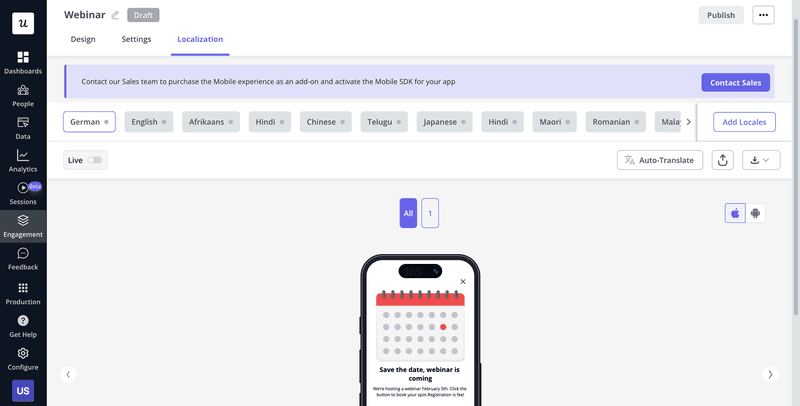
Monitor user satisfaction continuously to increase mobile app retention
When users feel frustrated with your app, it’s often a sign they’re about to leave. For instance, imagine a mobile shopping app that crashes at checkout or takes too long to load. It pushes shoppers to abandon their carts and share negative feedback.
You can spot and address these issues early by actively tracking reviews, support tickets, and usage data at each step of the user journey. Taking swift action restores user confidence, prevents churn, and keeps customers from switching to competitors.
Survey your customers to identify areas of improvement
Gather insights from your surveys and use them to prioritize improvements that align with what users want. This data will help guide your decisions on where to focus development efforts for maximum impact.
However, timing is everything. Avoid disrupting the user experience by presenting surveys at inconvenient moments. For example, popping up a survey when a user enters the app for something urgent can lead to frustration. Instead, trigger surveys when users are more likely to engage, i.e., after completing a task or after spending a certain amount of time in the app.
Mobile surveys should be brief and concise. Offer pre-filled options to make it easy for users to respond quickly and efficiently.
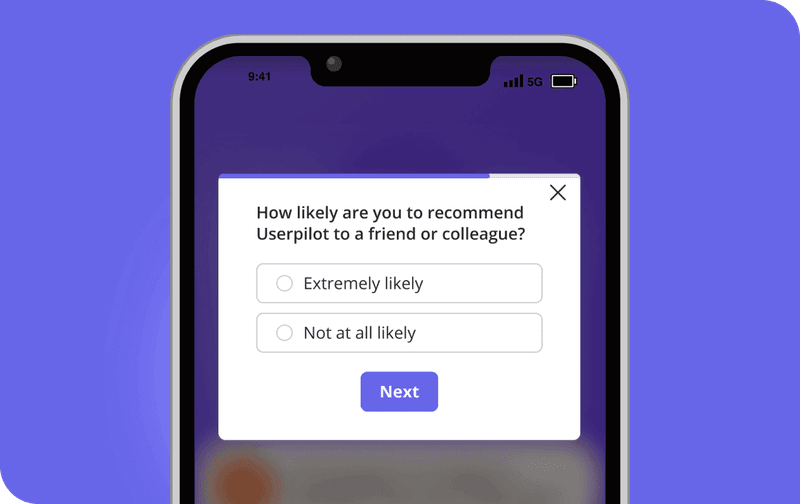
Take a look at analytics and user behavior
If you want to increase user retention, you must first understand how users navigate your app. I suggest creating analytics dashboards and using session replays to track user behavior and spot areas where users drop off because of bugs, confusion, or friction points in the flow.
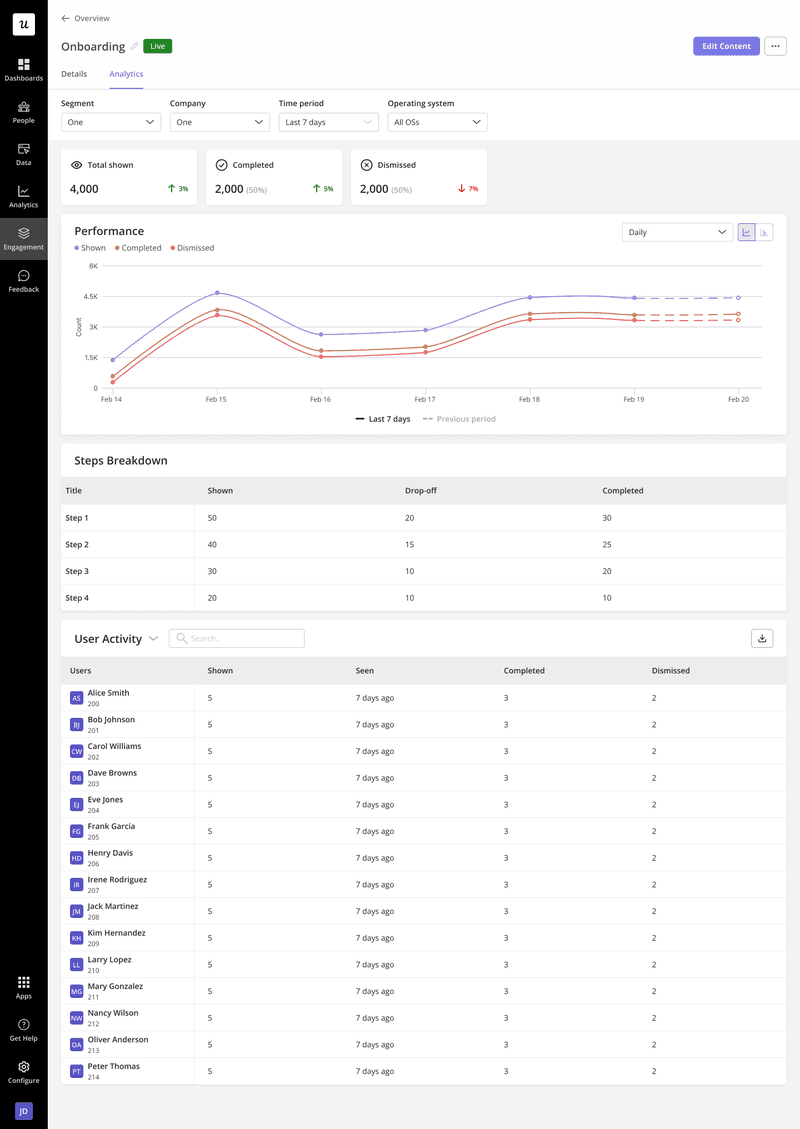
Practice app store optimization (ASO)
App Store Optimization (ASO) is optimizing your app’s store listing using relevant keywords, compelling screenshots, and accurate descriptions that can boost installs and improve long-term retention.
Apps with solid ASO strategies achieve better user retention by making it easier for users to find them and understand their value quickly.
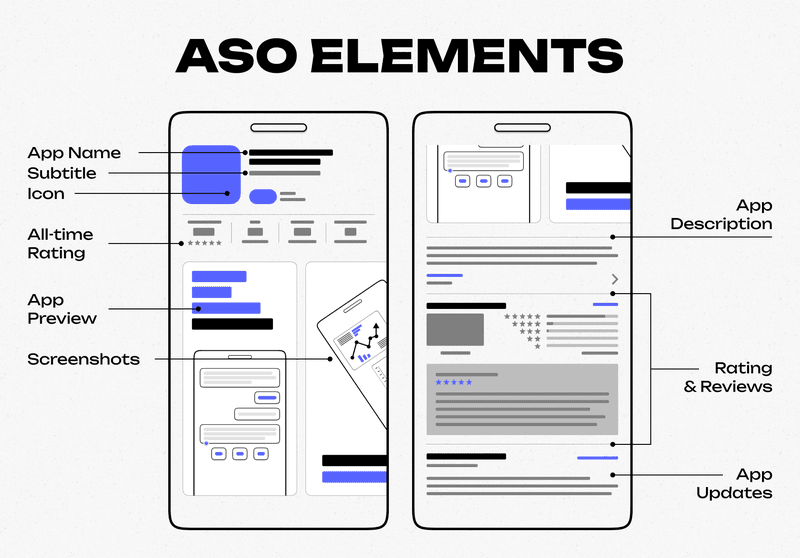
How to ensure app’s success based on the industry
The strategies you use to retain users will vary greatly depending on the type of app you’re building. Let’s break down the strategies for different app categories and tailor them to what makes each unique:
Gaming app specific retention strategies
- Create an engaging onboarding experience: Let users jump right into a demo level instead of just reading instructions. This immediately immerses them in the gameplay.
- Implement daily rewards and streaks: Encourage habit formation with login bonuses and rewards for consecutive play.
- Offer personalized challenges: Adjust the difficulty based on player skill and suggest missions that align with their in-game behavior.
- Incorporate social and multiplayer features: Introduce team-based rewards, friend invites, and real-time competitions to enhance social interaction.
- Use push notifications strategically: Send personalized event reminders and time-sensitive offers to keep players engaged.
- Introduce limited-time events and rotating content: Keep the game feeling fresh with seasonal challenges, special events, and rotating content updates.
- Build an in-app community: Use leaderboards, achievement showcases, and chat features to create a sense of community and competition.
- Ensure seamless progression across devices: Allow players to save their progress to the cloud and sync their accounts across devices for a smooth experience.
Social media apps specific retention strategies
Social media apps thrive on constant engagement and content consumption, so your retention strategies must focus on fostering community, keeping content fresh, and providing real-time feedback:
- Personalized content feeds: Like Nike Run Club’s tailored workouts based on activity and fitness goals, curate content that aligns with each user’s interests, ensuring they receive posts and recommendations encouraging engagement.
- User-generated content (UGC) incentives: Encourage users to create and share content by offering rewards like likes, comments, or featured spots on the platform, similar to how Nike uses community challenges to motivate users to engage.
- Engagement notifications: Send notifications, like Headspace’s daily check-in reminders or Nike’s motivational nudges, to keep users coming back to the app and staying motivated.
- Group interactions and communities: To foster deeper connections, develop spaces for users to join or create groups based on shared interests, like Nike Training Club’s community features or Headspace’s social engagement elements.
- Interactive features: Incorporate interactive elements like Nike’s workout challenges or Headspace’s streak tracking to encourage users to engage actively and consistently.
- Exclusive content: Offer premium content or VIP access for paying users, as Nike does with exclusive training programs or Headspace with personalized meditation recommendations, to enhance their sense of belonging and value.
Language learning app specific retention strategies
The key to retention for a language learning app is progress tracking, user motivation, and creating an immersive learning environment throughout the customer journey:
- Daily practice reminders: Prompt users to return and continue learning daily, creating a habit.
- Streak alerts: Motivate users to maintain their learning streak, increasing daily engagement.
- Leaderboard notifications: Introduce friendly competition with leaderboards, encouraging loyal users to keep progressing. Duolingo combines short, engaging lessons with a reward system, encouraging users to return daily to keep their streaks alive.
- Guilt when not returning: Send subtle reminders that motivate users to return and not break their streak.
- Surprise messaging: Duolingo shocked users by announcing that they wouldn’t receive notifications from the Duolingo Owl anymore, causing an outcry. The result? Users flocked back to the app.
E-commerce app specific retention strategies
In e-commerce, improving customer retention rate comes down to convenience, personalization, and offering value at every stage of the buying process for existing users:
- Personalized product recommendations: Use data to personalize recommendations based on user behavior, past purchases, and browsing history.
- Exclusive deals for existing customers: Reward repeat customers with discounts, early access to sales, or exclusive offers.
- Push notifications with personalized offers: Send notifications for flash sales, discounts on items users have viewed, or restocks of popular products.
- Easy and secure checkout: Simplify the in-app purchase process with one-click purchasing, saved payment options, and quick checkouts.
- User reviews and ratings: Encourage user-generated reviews and ratings from valuable users to build trust and guide future purchases.
- Loyalty programs: Build a rewards program that gives users points or incentives for their purchases, encouraging repeat visits and purchases.
Amazon’s “Recommended for You” section and personalized email offers make it clear how powerful product personalization can improve retention by making users feel like they are being understood and catered to.
Boost Retention with Effective Strategies
As user expectations grow, prioritizing retention through personalization and proactive engagement is essential for long-term success.
Ready to implement these strategies? Book a free demo with Userpilot to optimize your app’s user experience and customer loyalty.
FAQ
What is the app user retention rate?
App user retention rate measures the percentage of users who continue using an app after their first visit. It is typically tracked over a specific time period (e.g., 30 days).
User retention metrics examples
Retention metrics include daily/weekly/monthly active users, churn rate, cohort analysis, and customer lifetime value, which help track how many users return to your app over time.
How do apps retain users?
App marketers retain users by offering personalized experiences, engaging content, seamless UX, regular updates via push notifications, loyalty programs, and consistent value to keep users engaged long-term.
What does 90% retention mean?
90% retention means 90% of users continue using the app after a set period (e.g., 30 days), indicating strong app engagement and value for the users.
What is user retention?
User retention refers to the ability of an app to keep active users returning over time, reflecting how well it meets their needs and keeps them engaged.



